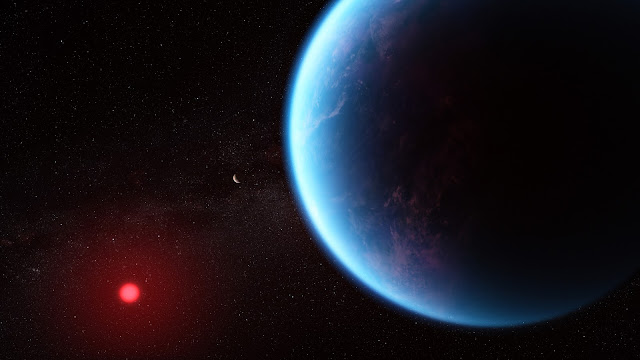Newly Detected Comet C/2023 P1 (Nishimura): Tails Growing Near Sun
Comet Nishimura is expanding. More precisely, the tails of comet C/2023 P1 (Nishimura) are growing as it nears the Sun. Discovered in August 2023, the comet is already near naked eye brightness as it now moves inside the Earth's orbit. The comet will be nearest the Earth next week, but nearest the Sun the week after—on September 17, 2023. Speculation holds that expelled ice and dust from Comet Nishimura's last visit to the inner Solar System may have created the Sigma Hydrids meteor shower which peaks yearly in December. If so, then this meteor shower may become more active, refreshed with new comet debris.
This image of Comet Nishimura was captured from Edgewood, New Mexico, USA four nights ago, showing a long ion tail structured by interactions with the solar wind. The solar wind is a stream of charged particles released from the upper atmosphere of the Sun, called the corona.
Look for this comet near your eastern horizon just before sunrise for the next few mornings, but very near your western horizon just after sunset next week—as its coma continues to brighten and its tails continue to grow.
C/2023 P1 (Nishimura) is a long-period comet discovered by Hideo Nishimura on Aug. 12, 2023. With an observation arc of seven months, the orbital period of the comet is estimated to be 434 years. An eccentricity of 0.996 gives the comet a semi-major axis (average distance from the Sun) of about 57 astronomical units (AU), which is comparable to the average distance of Eris at 68 AU. The comet will not leave the Solar System and will come to aphelion (farthest distance from the Sun) in the year 2227.
1 astronomical unit (AU) = equal to 150 million kilometers (93 million miles) or 8.3 light-minutes
An astronomical unit is a unit of length, roughly the distance from Earth to the Sun.
Japanese amateur astronomer Hideo Nishimura discovered the comet in images he obtained using a 200-mm f/3 telephoto lens mounted on a Canon EOS 6D on Aug. 12, 2023, when the comet was 1 AU from the Sun.
Image Credit & Copyright: Peter Kennett
Peter's Instagram page:
https://www.instagram.com/kennettphotography/
Image Date: Sept. 5, 2023
Release Date: Sept. 9, 2023
#NASA #Space #Astronomy #Science #Sun #Earth #Comets #Comet2023P1 #CometNishimura #SolarSystem #Astrophotography #PeterKennett #HideoNishimura #Astrophotographers #CitizenScience #UnitedStates #Japan #日本 #STEM #Education #APoD



APoD.jpg)

.jpg)
.jpg)
.jpg)



APoD(R).jpg)